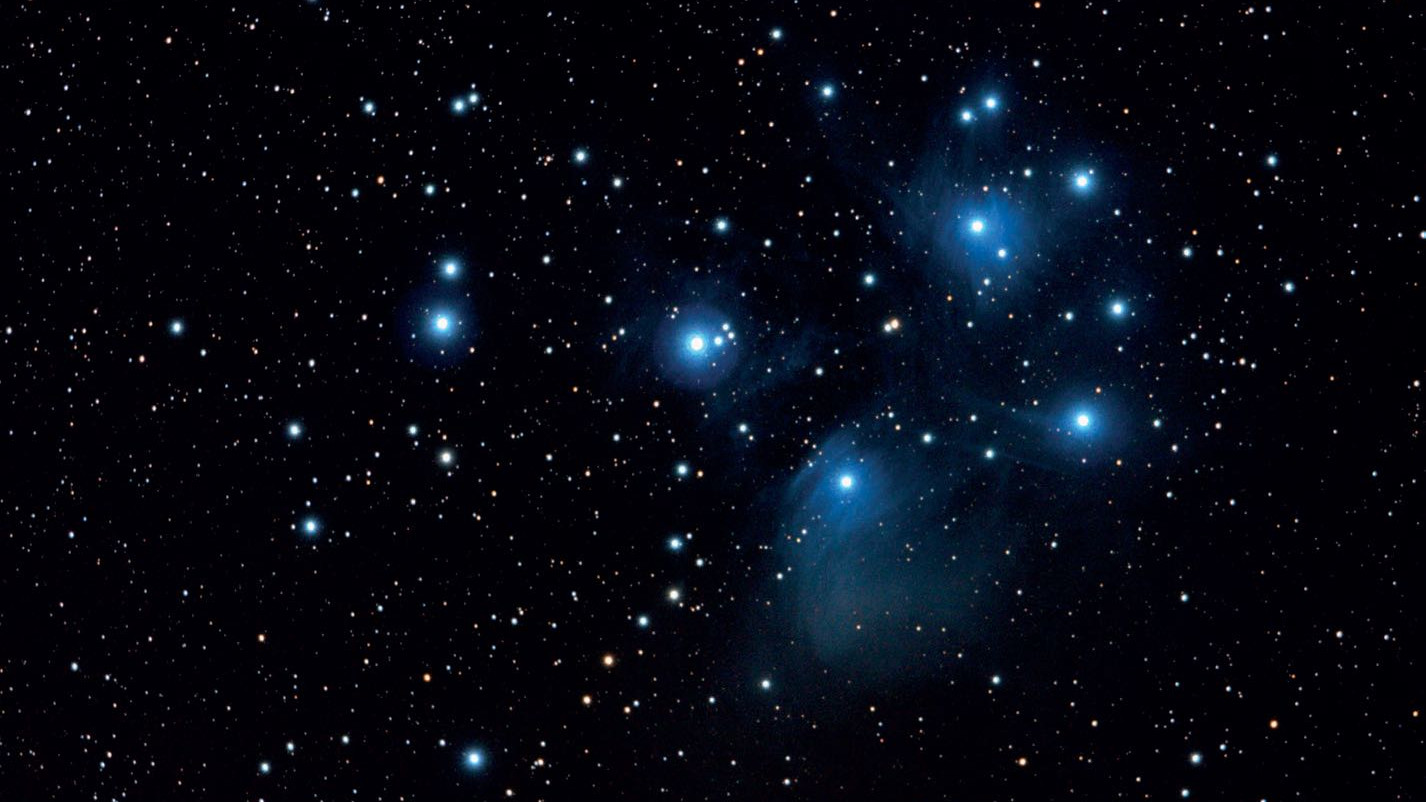Binary stars in the Pleiades
This striking star cluster is more than just an object for binoculars and reveals beautiful multiple stars; perfect for the city.
 The Pleiades also have a lot to offer for city watchers, even if the famous reflection nebulae are not visible. Friedrich Topf / CCD Guide
The Pleiades also have a lot to offer for city watchers, even if the famous reflection nebulae are not visible. Friedrich Topf / CCD GuideThe Pleiades (also known as M45 or the Seven Sisters) are regularly absent from the city wintertime observing night agenda, as they are visible with the naked eye and make a very attractive binoculars object. This lack of attention is not entirely justified, because M45 has a lot to offer if you take a closer look. Although the famous reflection nebulae surrounding the main stars of the Pleiades remain inaccessible to the city astronomer, M45 contains a whole series of beautiful multiple star systems, which can also be observed from urban locations.
A historical perspective
 Drawing of the Pleiades through 20×125 binoculars. Uwe Glahn
Drawing of the Pleiades through 20×125 binoculars. Uwe GlahnAnyone who begins observing the Pleiades with a telescope with 15 times magnification will see an image that can be described as historically very significant: when Galileo Galilei made his first discoveries in 1610 with the recently-invented telescope, he turned his gaze to the Pleiades during his first observation nights and, surprised by the unexpected abundance of stars, counted 36 stars in the immediate vicinity of the Seven Sisters, roughly the number you can see nowadays in the city night sky at 15 times magnification.
The image with the distinctive diamond of stars has not lost any of its allure to this day. The binary stars and multiple star systems are just as interesting.
A binary star tour
In the northern centre of the striking diamond of stars formed by Alcyone in the west, Maia in the north, Electra in the east and Pleione in the south we find our first star pair - even with just 25× magnification. This pair of stars was first catalogued by the US astronomer Sherburne W. Burnham (1838 to 1921), with only the two magnitude 8.3 bright and 41" apart components visible in the city night sky. A third companion with a brightness of magnitude 12.7 may be inaccessible even at maximum magnification. By the way: in Galileo's drawing of the Pleiades in his 1610 publication Sidereus Nuncius, this pair of stars – easily distinguishable with today's instruments – had not yet been identified as a binary star.
The second stop on our short binary star tour through M45 is the brightest star of the Pleiades, Alcyone or η Tauri: at magnitude 2.9 it has 1,000 times the luminosity of our Sun. η Tauri is accompanied to the east by three stars that are about the same brightness and form an elongated triangle. They are physically connected to Alcyone, but you will need at least 120× to be sure to resolve them. Too much for Galilei: he marked Alcyone’s companions as just a single star in his illustrations in Sidereus Nuncius.
Finally Taygeta or 19 Tauri, a bright star that lies in the extension of a imagined line between Alcyone and Maia, which shines slightly more faintly than these two stars. Taygeta also has a companion, which can only be distinguished as a tiny flash of light at high magnification (from 120×), and often only with averted vision.
 Finding chart for our observing recommendations in Pleiades. J. Scholten
Finding chart for our observing recommendations in Pleiades. J. ScholtenAuthor: Karl-Peter Julius / Licence: Oculum-Verlag GmbH
